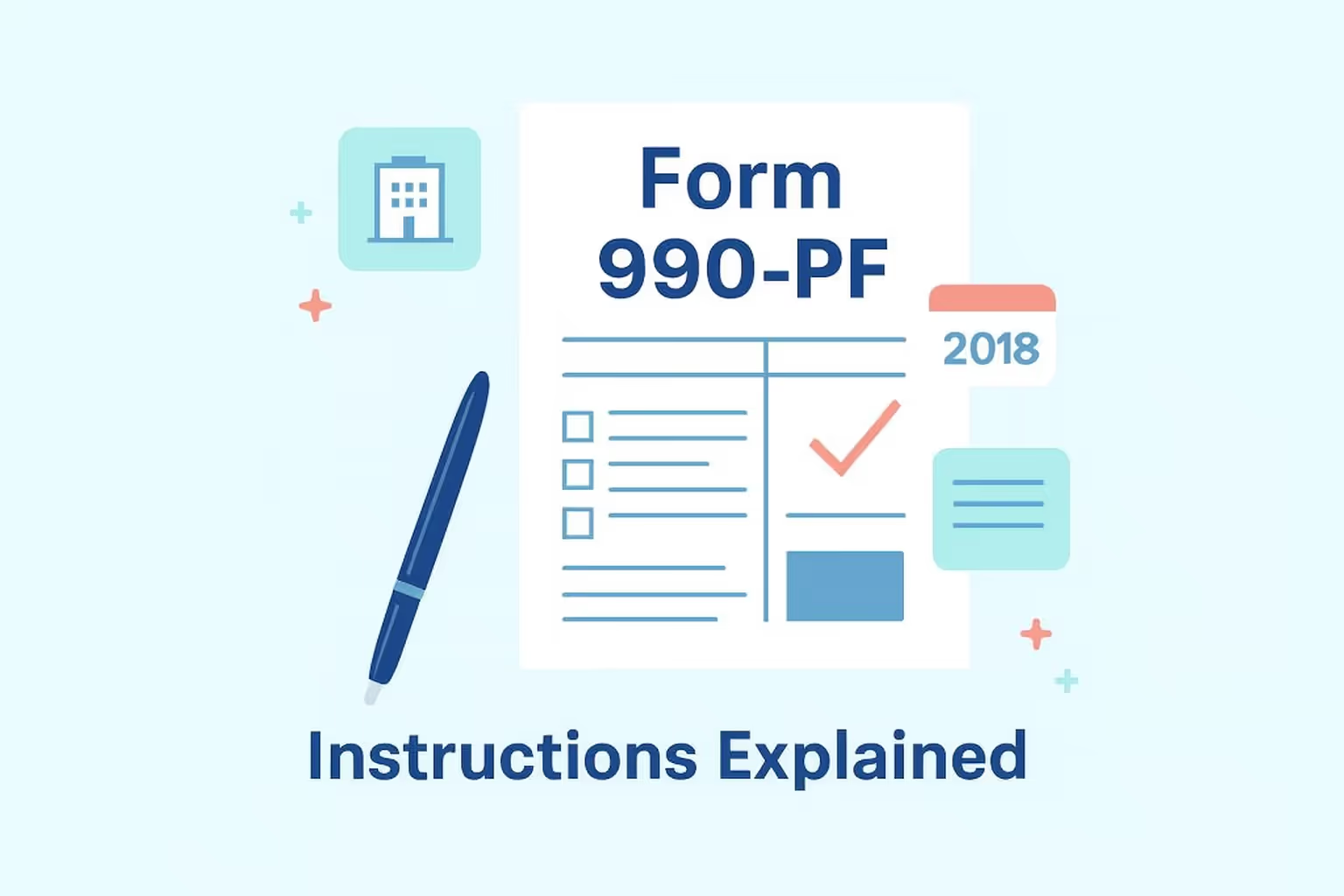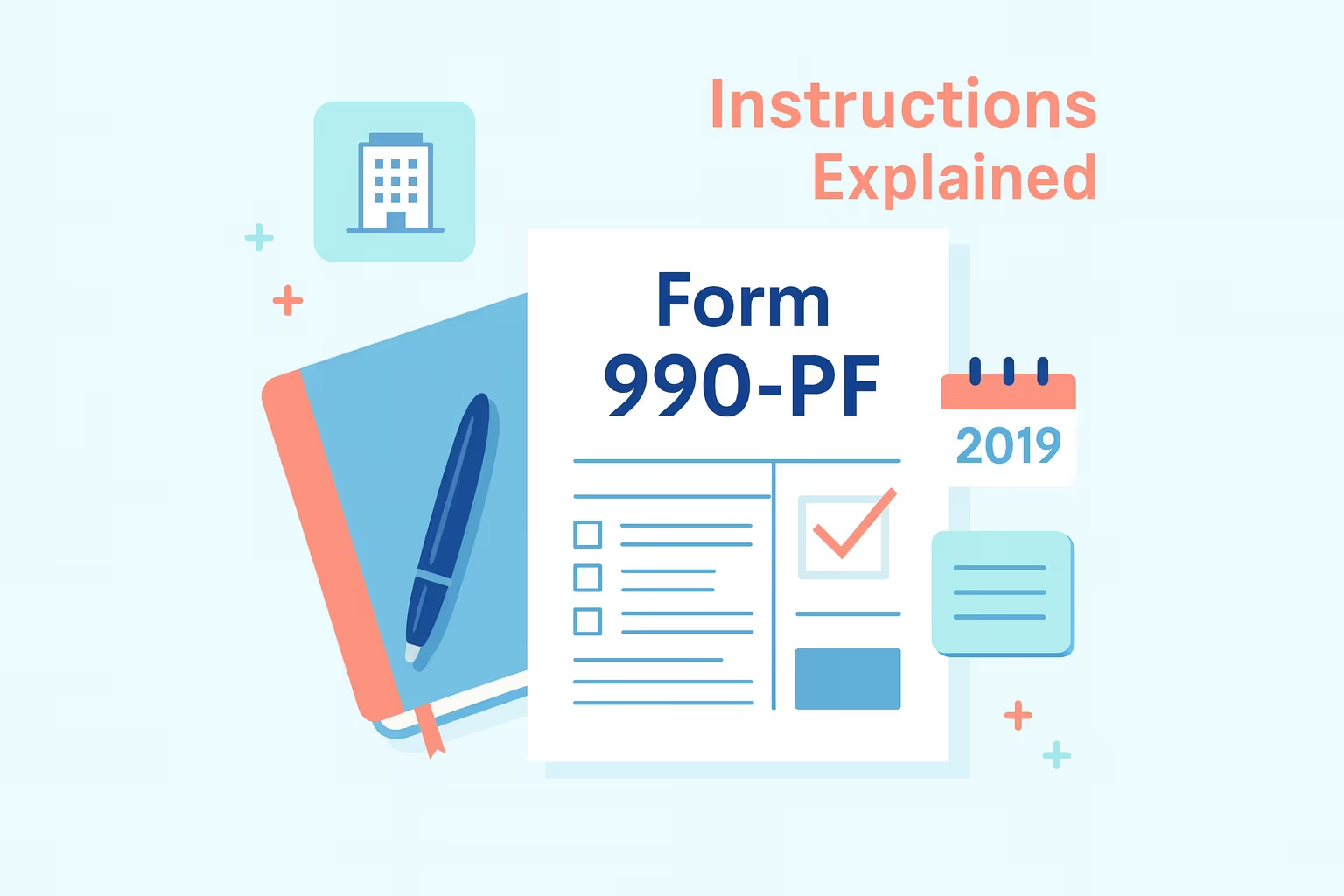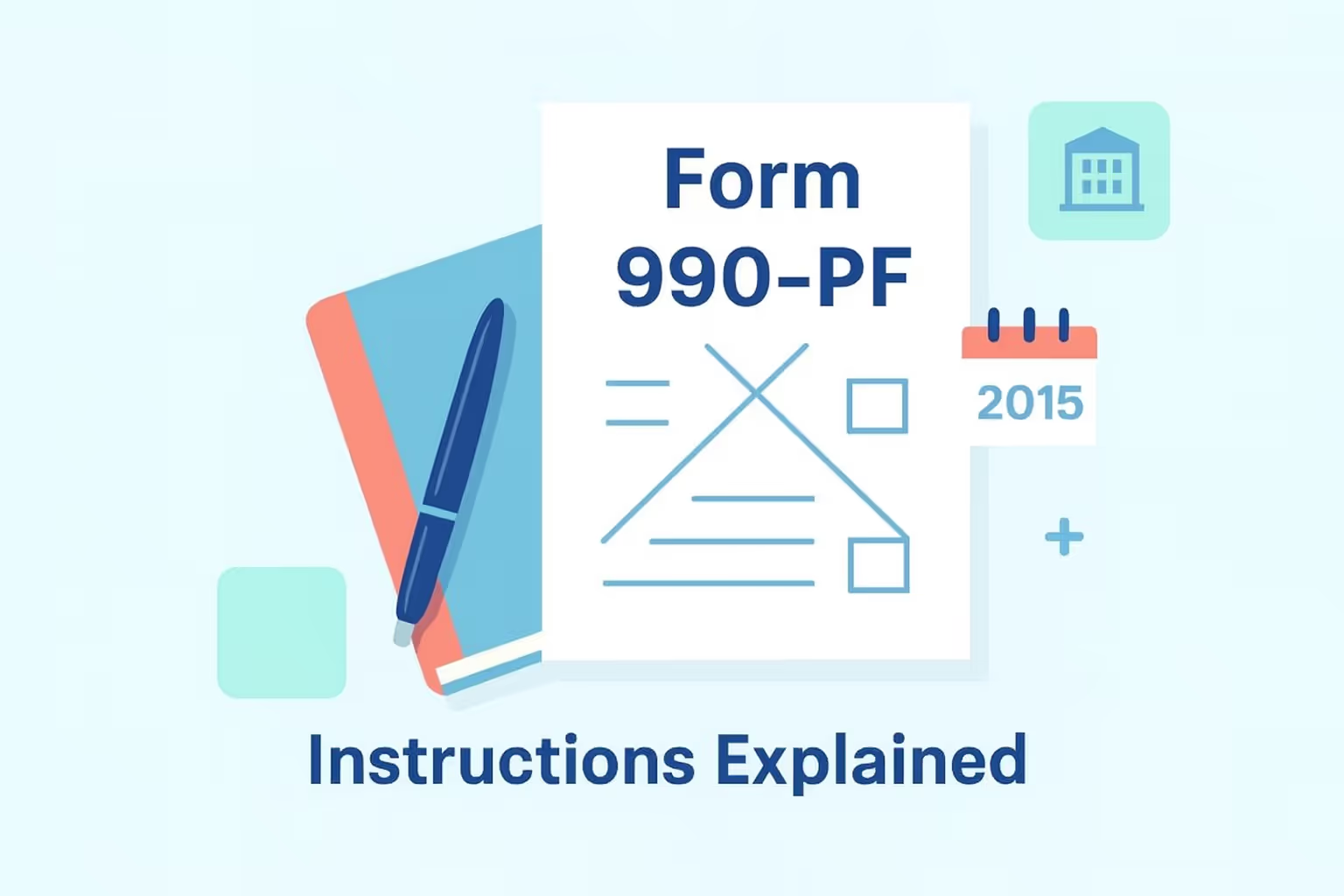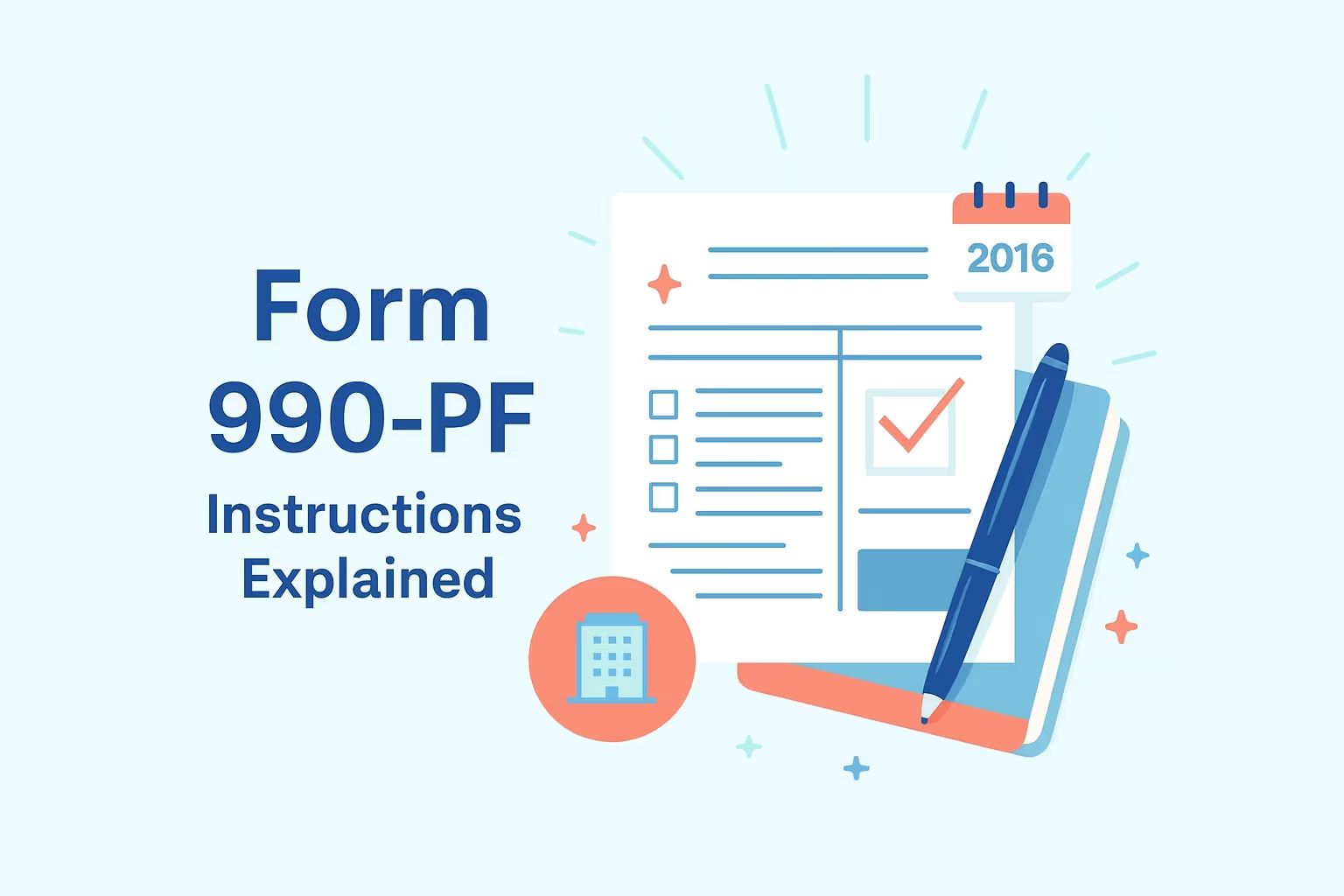IRS Form 990-PF (2022): Return of Private Foundation

What IRS Form 990-PF (2022) Is For
Form 990-PF is the annual return used by a private foundation to report net investment income, excise tax, charitable distributions, and financial accounts for the foundation’s tax year. It applies to exempt private foundations, taxable private foundations, and any non-exempt philanthropic trusts treated as private foundations. The form also helps the IRS assess tax liability, confirm tax-exempt status, and evaluate whether a foundation meets qualifying distribution rules for charitable purposes.
When You’d Use Form 990-PF for 2022
Foundations file the 2022 Form 990-PF when reporting investment income, gross receipts, capital gains, and related expenses for a tax year beginning in 2022. Late or amended filings are required when errors are found, tax remains unpaid, or a foundation corrects information such as net assets, qualifying distribution amounts, or fund balances. Filing also applies when organizations claim private foundation status or convert to a private operating foundation.
Key Rules or Details for 2022
- Excise tax rate: The Internal Revenue Service applied a 1.39 percent excise tax based on net investment income. Foundations were required to calculate this amount accurately to avoid additional assessments.
- Minimum payout requirement: Private foundations were required to meet the minimum investment return standard, ensuring that qualifying distributions supported charitable purposes throughout the year.
- E-filing requirement: All tax-exempt organizations were required to file electronically, and the IRS allowed paper filing only when specific exemptions applied to the foundation’s structure.
- Distribution reporting: Foundations were required to report charitable distributions in Parts I and XV, and inconsistent entries could trigger a review of undistributed income or excess business holdings issues.
- Accounting standards were established to classify net assets into proper categories, and accurate reporting protected exempt status while preventing errors in excise tax-based calculations.
Browse more tax form instructions and filing guides in our Forms Hub.
Step-by-Step (High Level)
Step 1: Gather financial records
Collect investment income statements, mutual fund reports, rental income documents, and financial instrument summaries. These records enable the accurate reporting of net income, gross income, and adjusted net income, allowing for the calculation of federal income tax, excise tax, and qualifying distributions without missing any required details.
Step 2: Confirm filing requirements
Determine whether the organization is an exempt private foundation, taxable private foundation, foreign foundation, or nonexempt charitable trust treated as a foundation. This step ensures the correct classification of gross receipts, tax-exempt interest, administrative expenses, and unrelated business income within the 2022 return.
Step 3: Complete the proper sections
Enter capital gains, net income, Social Security benefits received, unemployment compensation, mortgage interest, and rental income. Each section must match the filing status MAGI threshold rules, adjusted gross income standards, and foreign country reporting requirements for financial accounts or foreign bank relationships.
Step 4: Calculate excise tax and distributions
Compute the excise tax based on net investment income and verify whether qualifying distributions meet the minimum investment return rules. This calculation also affects tax paid, unpaid tax, and any excise tax-based penalties if the foundation fails to distribute the required amounts for charitable purposes.
Step 5: Review and e-file the return
Before submitting, review prohibited tax shelter transactions, certain personal benefit contracts, direct charitable activities, and personal benefit contracts to ensure accuracy. Electronic filing through an IRS-accepted provider ensures quicker processing and reduces delays tied to incomplete forms or inaccurate entries.
Learn more about federal tax filing through our IRS Form Help Center.
Common Mistakes and How to Avoid Them
- Incorrect payout calculations: Some filers miscalculate the minimum investment return, which can result in penalties for failing to distribute income. Reviewing asset values and distribution totals carefully helps avoid tax-based assessments.
- Missing required schedules: Foundations sometimes omit schedules covering charitable distributions or excess business holdings. Checking all attachments before e-filing prevents correspondence and additional administrative expenses.
- Reporting inconsistencies: Errors appear when gross income entries conflict with adjusted gross income or net income figures. Comparing totals across sections ensures alignment and prevents issues with private foundation status.
- Unreported foreign accounts: Foreign bank relationships or foreign foundations may be overlooked. Verifying financial accounts and foreign country disclosures helps avoid penalties associated with incomplete reporting.
- Personal benefit contract errors: Failure to disclose certain personal benefit contracts creates compliance problems. Reviewing agreements and related expenses before filing protects exempt status and ensures accurate disclosure.
Learn more about how to avoid business tax problems in our guide on How to File and Avoid Penalties.
What Happens After You File
The Internal Revenue Service typically processes Form 990-PF within several months, depending on the complexity of the return, excise tax calculations, or foreign foundation disclosures. You may receive notices requesting clarification about reported income entries, tax liability, or estimated tax payments. If tax remains unpaid, the IRS may apply interest or additional assessments. State charity officials may also require copies for oversight of the foundation’s charitable purposes.
FAQs
How does IRS Form 990-PF 2022 affect undistributed income reporting?
Form 990-PF requires foundations to calculate undistributed income accurately using minimum investment return rules. If amounts are incorrect, the IRS may assess excise tax or request amendments to correct the error.
Why must Form 990-PF include net asset information for private foundations?
The form requires detailed reporting of net assets to determine qualifying distribution requirements and verify that a foundation maintains proper charitable purposes throughout its tax year.
How do the rules for estimated taxes work for foundation managers on the return?
Foundation managers ensure estimated tax amounts are accurate for excise tax calculations, and they confirm that investment income and tax paid entries match the foundation’s actual financial activity.
Why is the minimum investment return important for net income and rental income reporting?
The minimum investment return drives payout requirements. Accurate reporting of net income, rental income, and financial instruments ensures qualifying distributions meet 2022 statutory thresholds.
How do excise tax-based rules affect exempt status for private foundations?
Excise tax-based calculations help the IRS evaluate exempt status. Incorrect figures or missing data, including details of foreign foundations or related expenses, may require additional review.
How do administrative expenses impact tax-based calculations on Form 990-PF?
Administrative expenses affect adjusted net income and payout amounts. Accurate reporting helps the IRS confirm compliance with tax-based rules tied to qualifying distribution requirements.
How do net assets and fund balance changes impact tax-based compliance?
Net assets and fund balances determine distribution obligations for the foundation’s tax year. Significant changes require a clear explanation to avoid questions about compliance or charitable purposes.
For more resources on filing or understanding prior-year IRS forms, visit our guide on Nonprofit & Exempt Organization Forms.



























